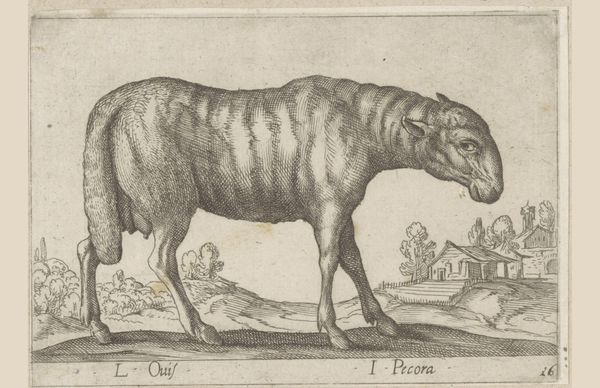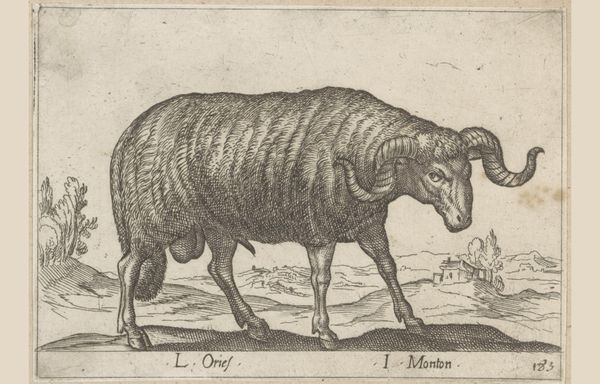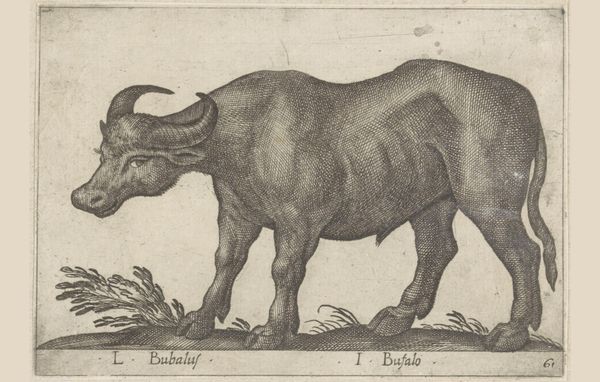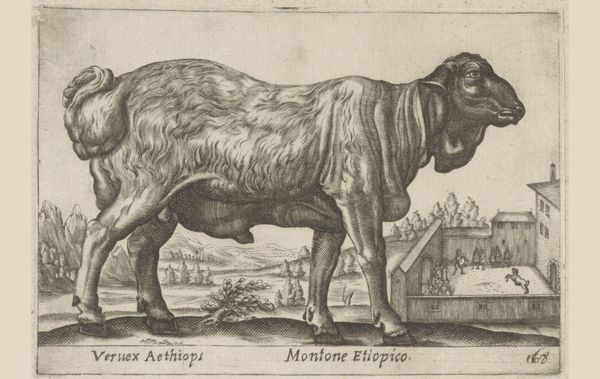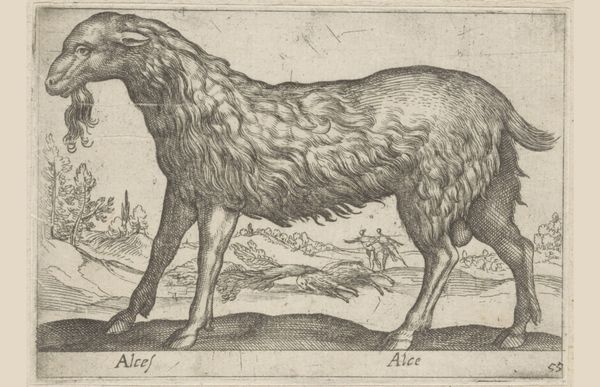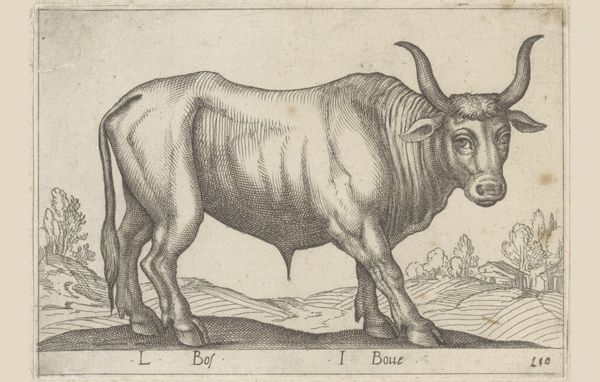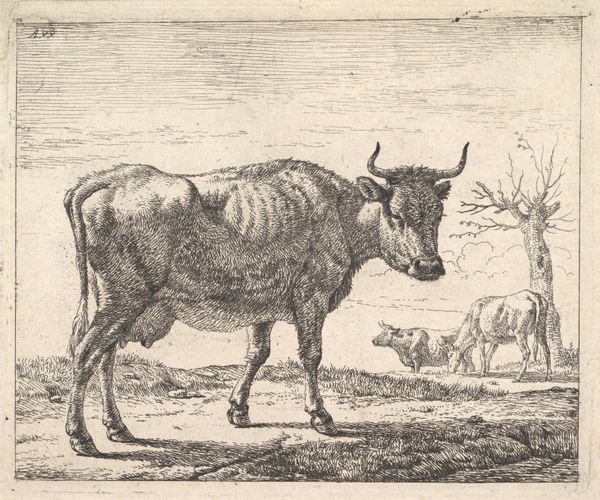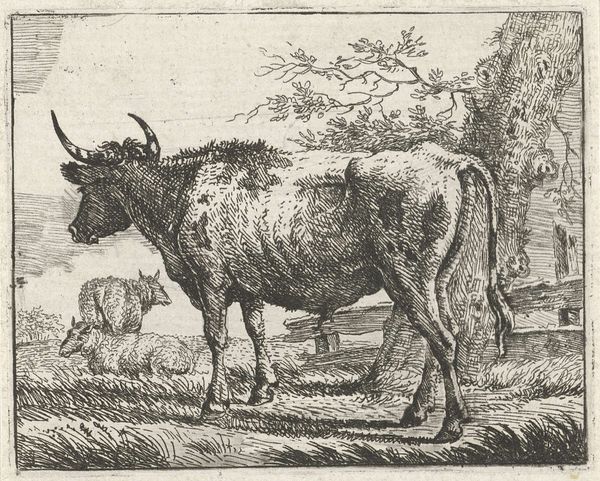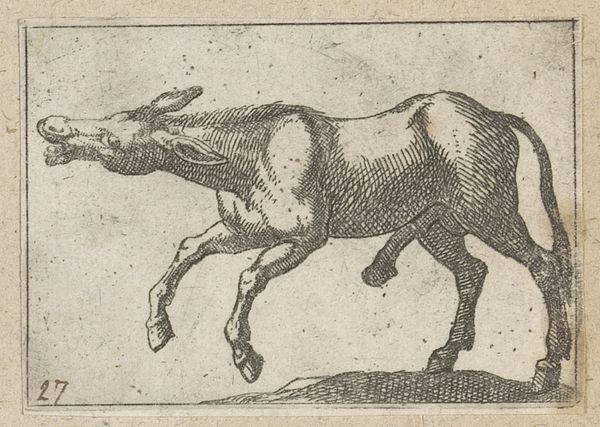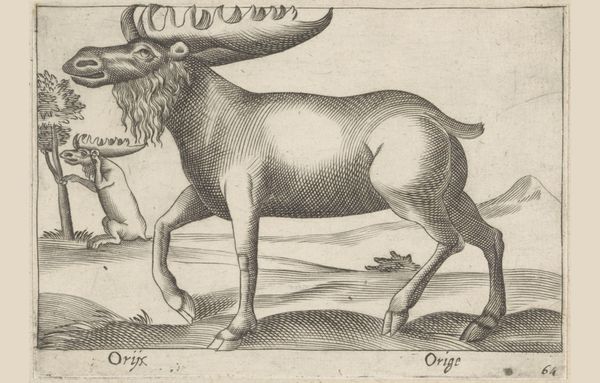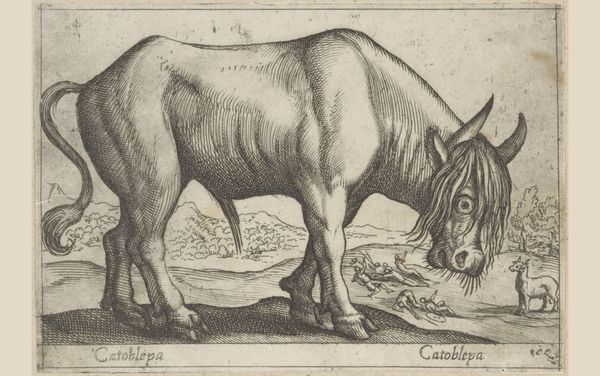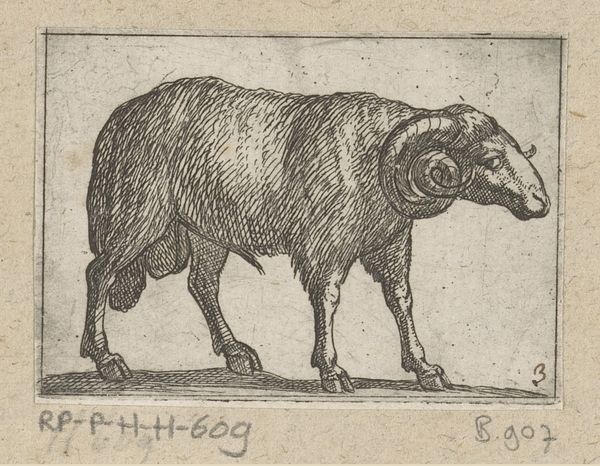
drawing, print, engraving
#
pencil drawn
#
drawing
#
toned paper
#
light pencil work
#
quirky sketch
#
baroque
# print
#
pencil sketch
#
sketch book
#
personal sketchbook
#
sketchwork
#
sketchbook drawing
#
genre-painting
#
sketchbook art
#
engraving
#
realism
Dimensions: height 95 mm, width 137 mm
Copyright: Rijks Museum: Open Domain
Editor: So, here we have Antonio Tempesta's "Arabisch schaap," likely created before 1650. It’s an engraving, a fairly simple image of a sheep, yet the animal seems burdened, perhaps overly heavy in its hindquarters. How would you interpret this work? Curator: Let's consider the materiality. It's an engraving. What does that process imply? The labor, the skill in manipulating metal and ink. Tempesta isn't just depicting a sheep; he's engaging with a specific mode of production. Where was this print intended to be seen and consumed, and by whom? That heavily influences its meaning. Editor: That's true; prints were often more accessible than paintings. Could this sheep be symbolic then? Is it more about its place in society as livestock, or perhaps even representing something else through its image? Curator: Absolutely. Think about the economy of the 17th century, the agricultural practices. Sheep meant wool, meat, fertilizer, commodities in trade. It is about materiality – the materials that it yields, how those impact local markets, maybe even international relations in ways we may not see immediately. How does that understanding shift your view of the "simple image" we started with? Editor: It becomes less about a picturesque farm scene and more about a vital cog in the economic machine of the time, literally giving material. So the 'burdened' look may represent the burden of work imposed upon these animals. Curator: Precisely. By considering the materials and the processes involved in creating and depicting this sheep, we uncover its broader societal context. The value of labor, materiality, and consumption within the society is so significant here. Editor: I never would have thought of it that way at first! Now I see that it’s not just about a sheep; it's about an animal’s existence being interwoven with people and how they used it. Curator: It highlights how artistic practices always reflect and shape the material conditions of their time, right? The artist as craftsman. It transforms the viewing experience, doesn't it?
Comments
No comments
Be the first to comment and join the conversation on the ultimate creative platform.
